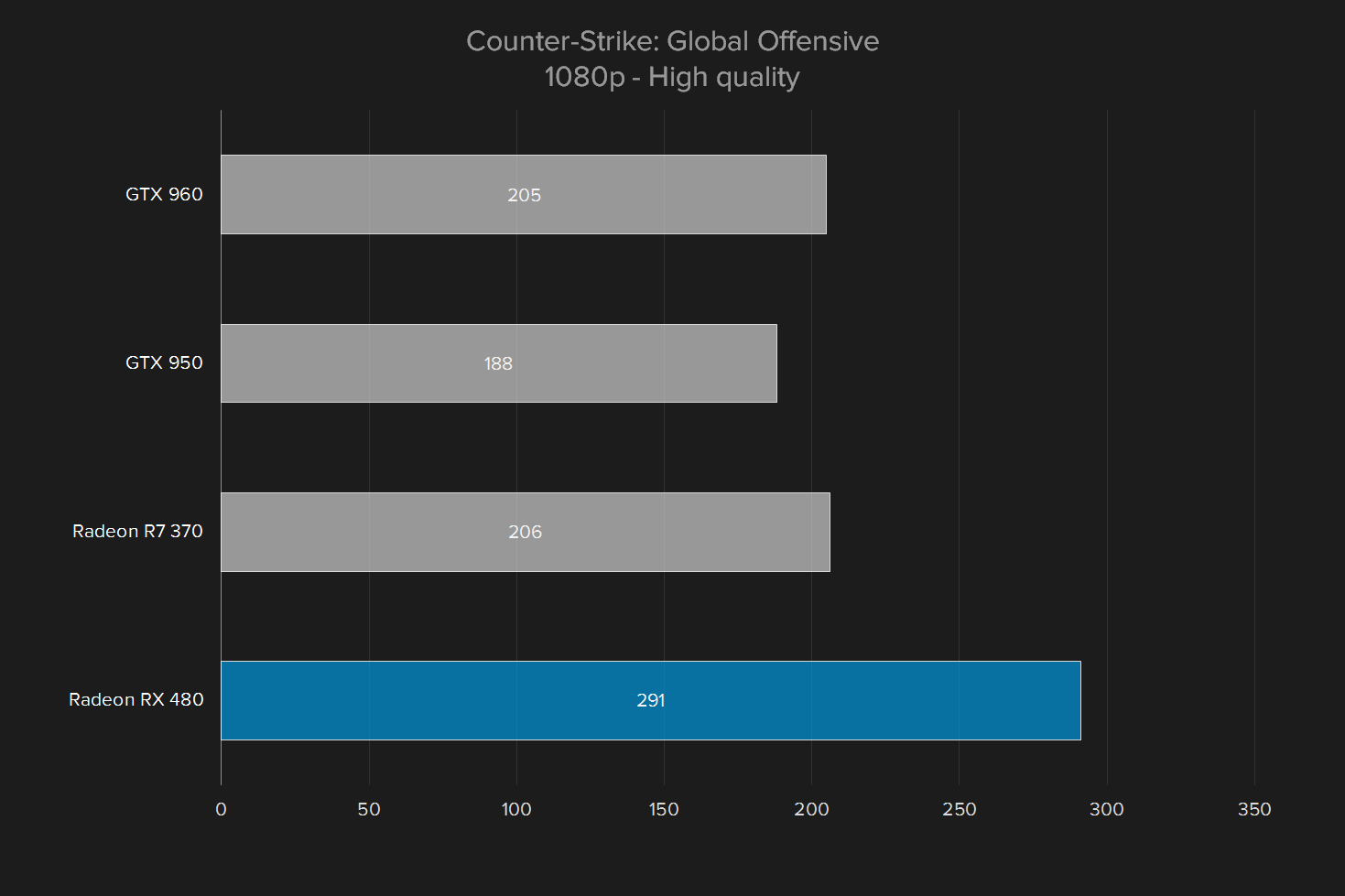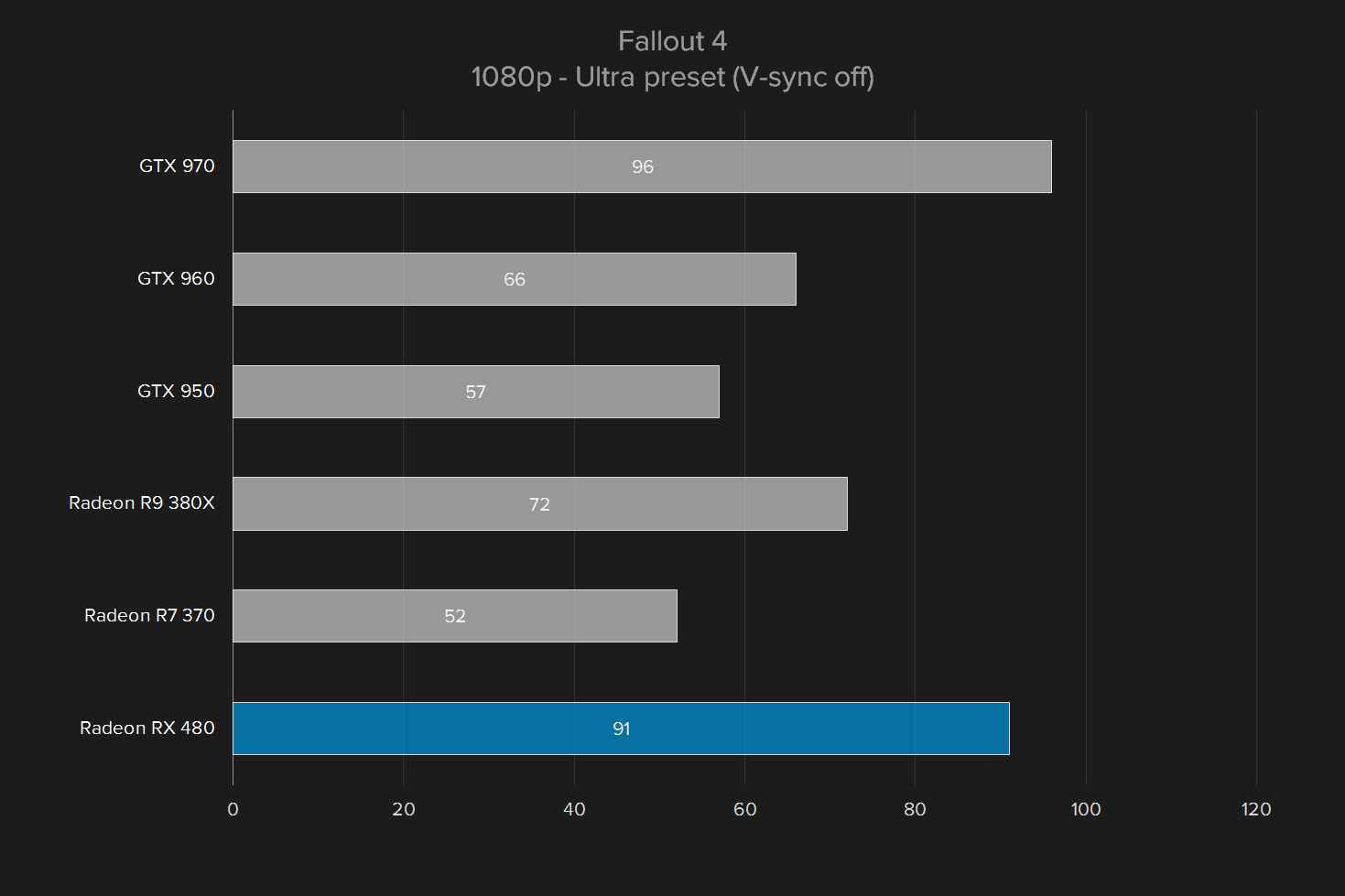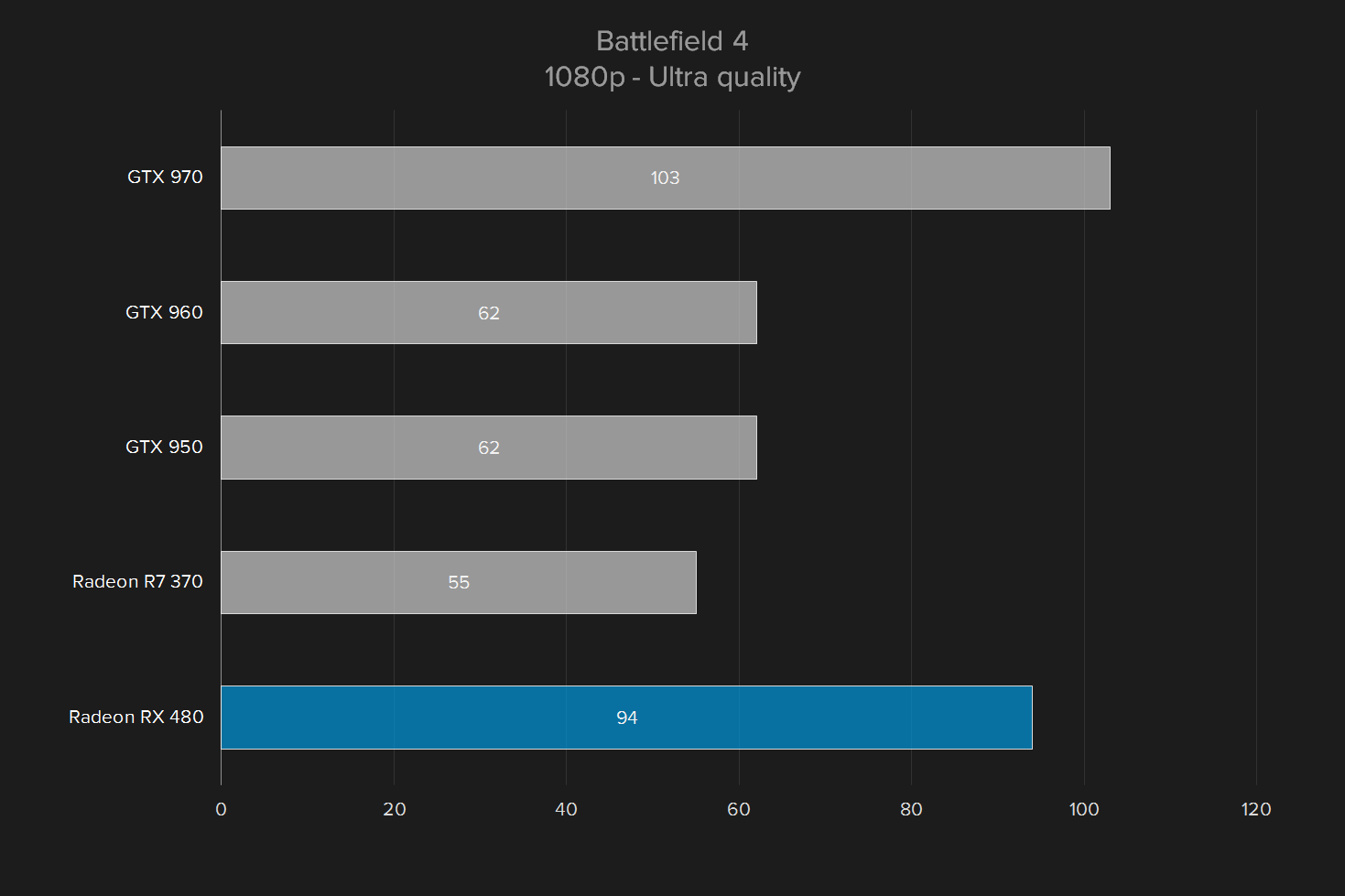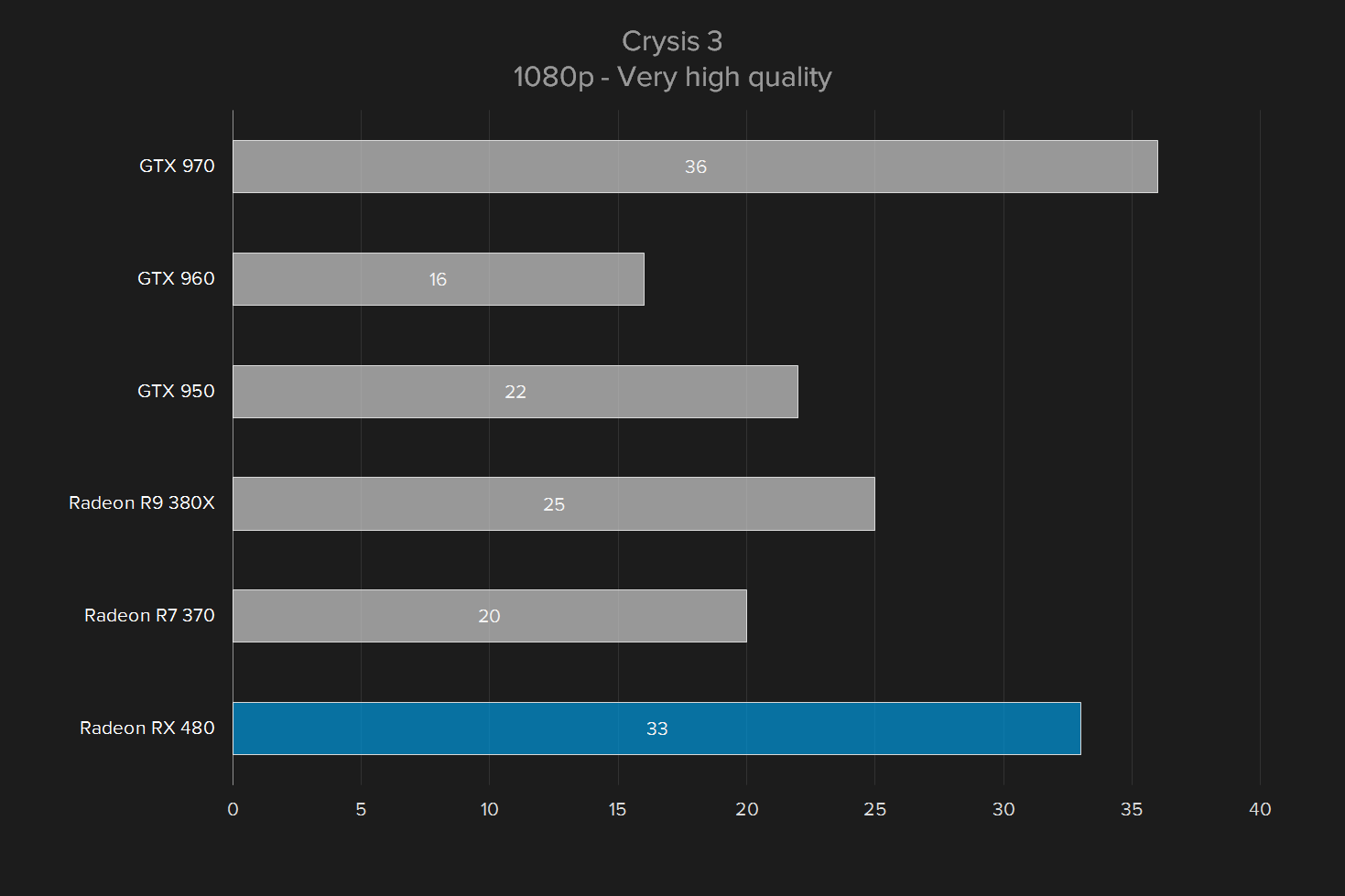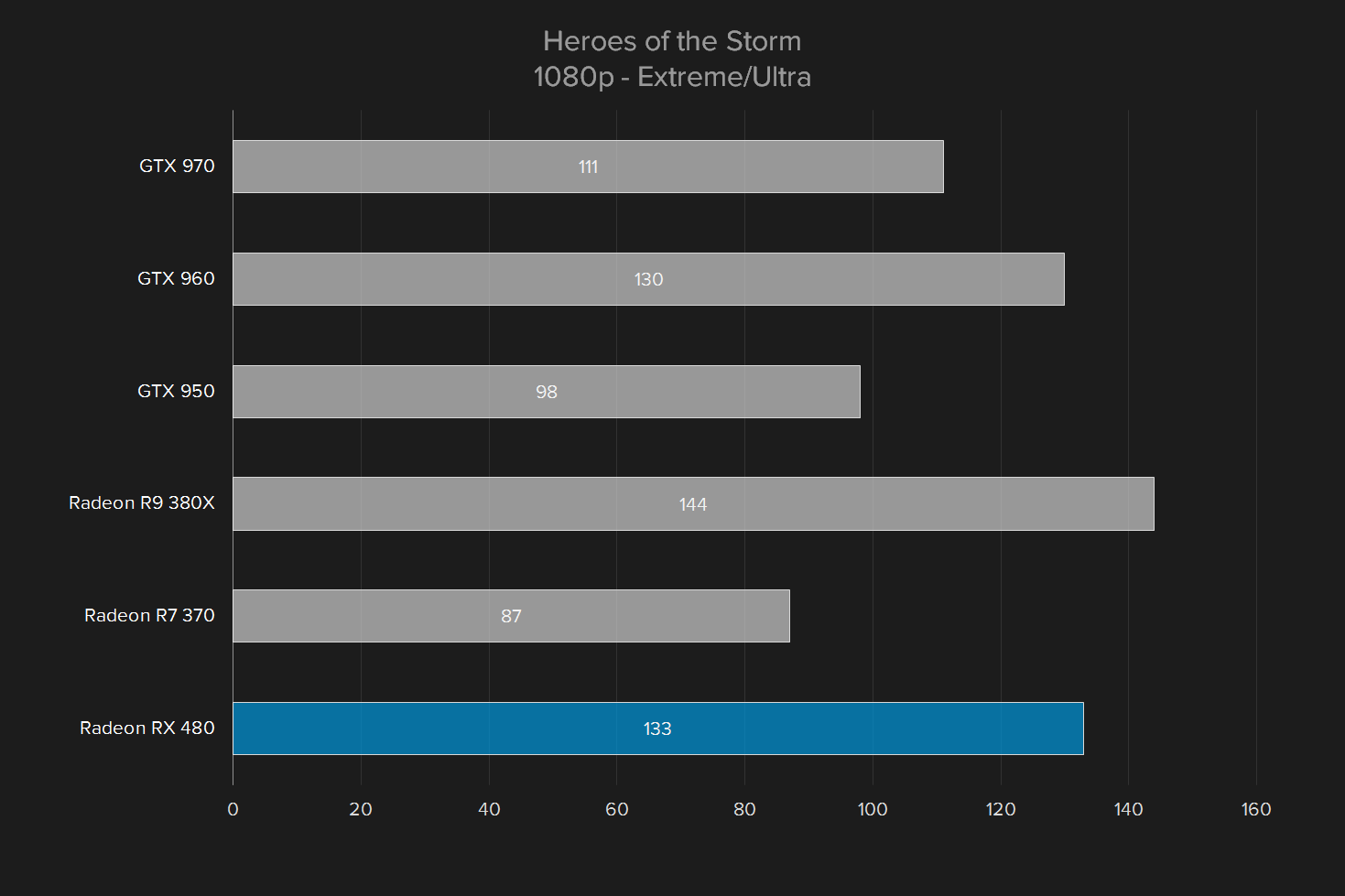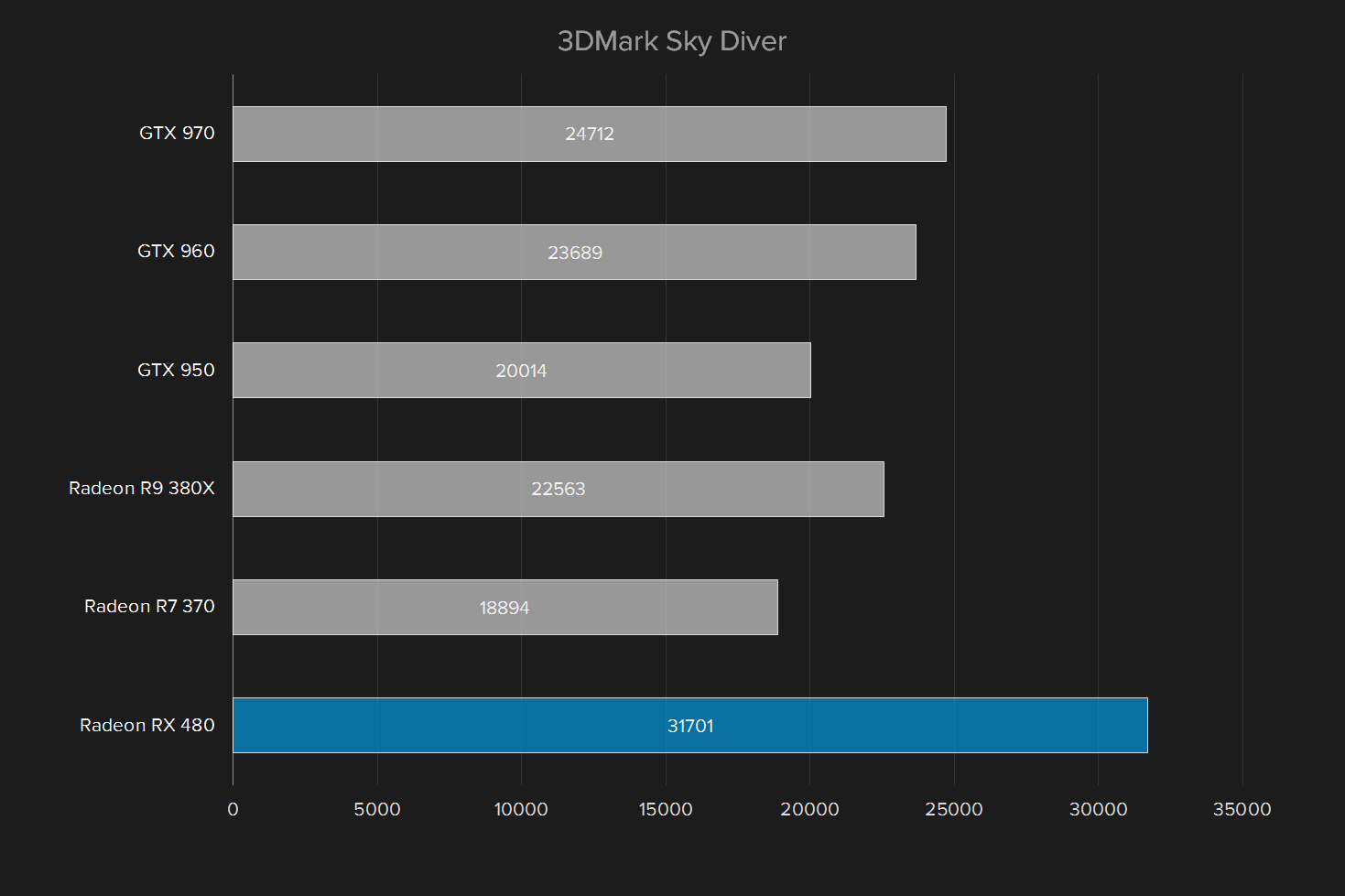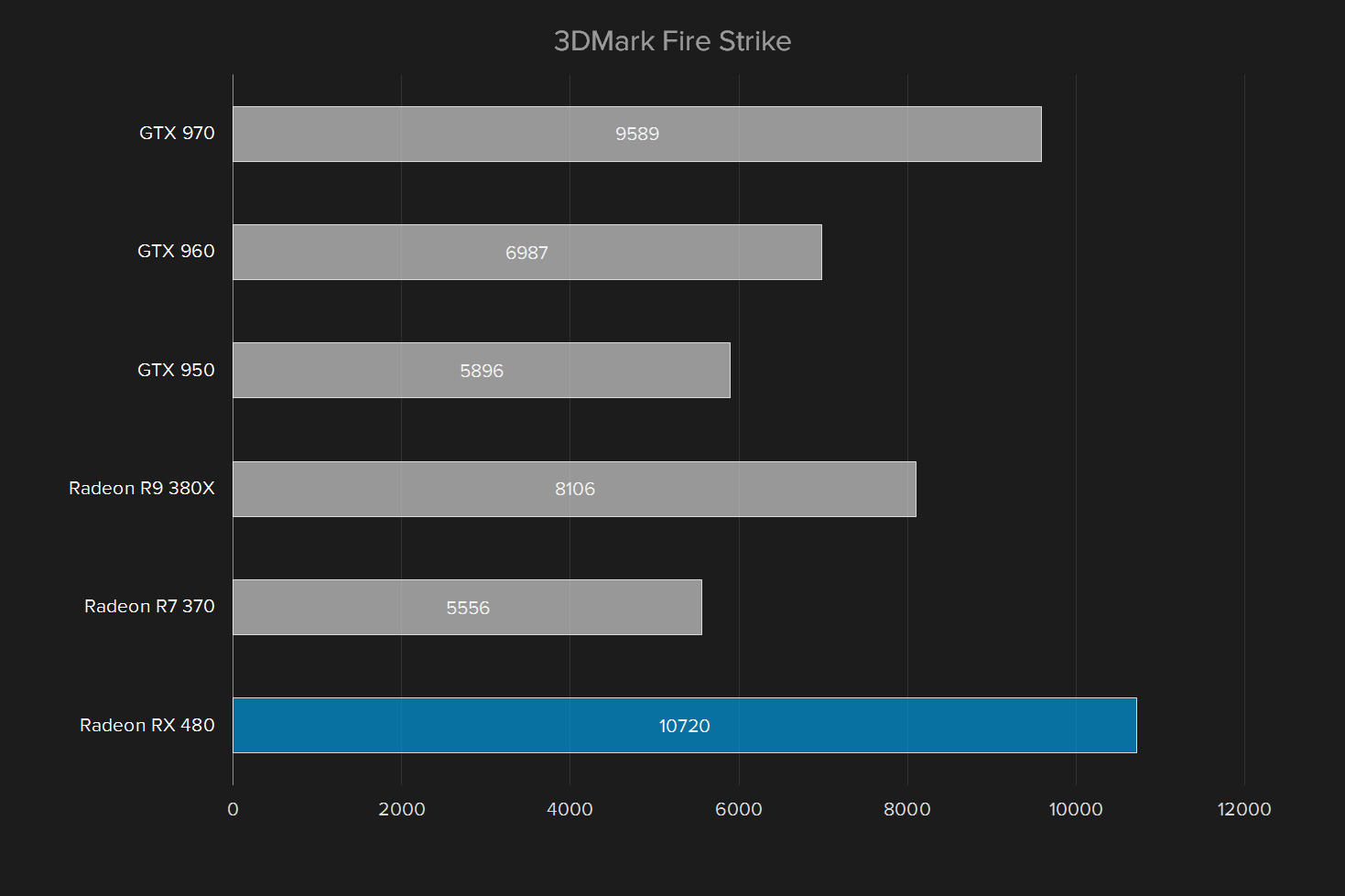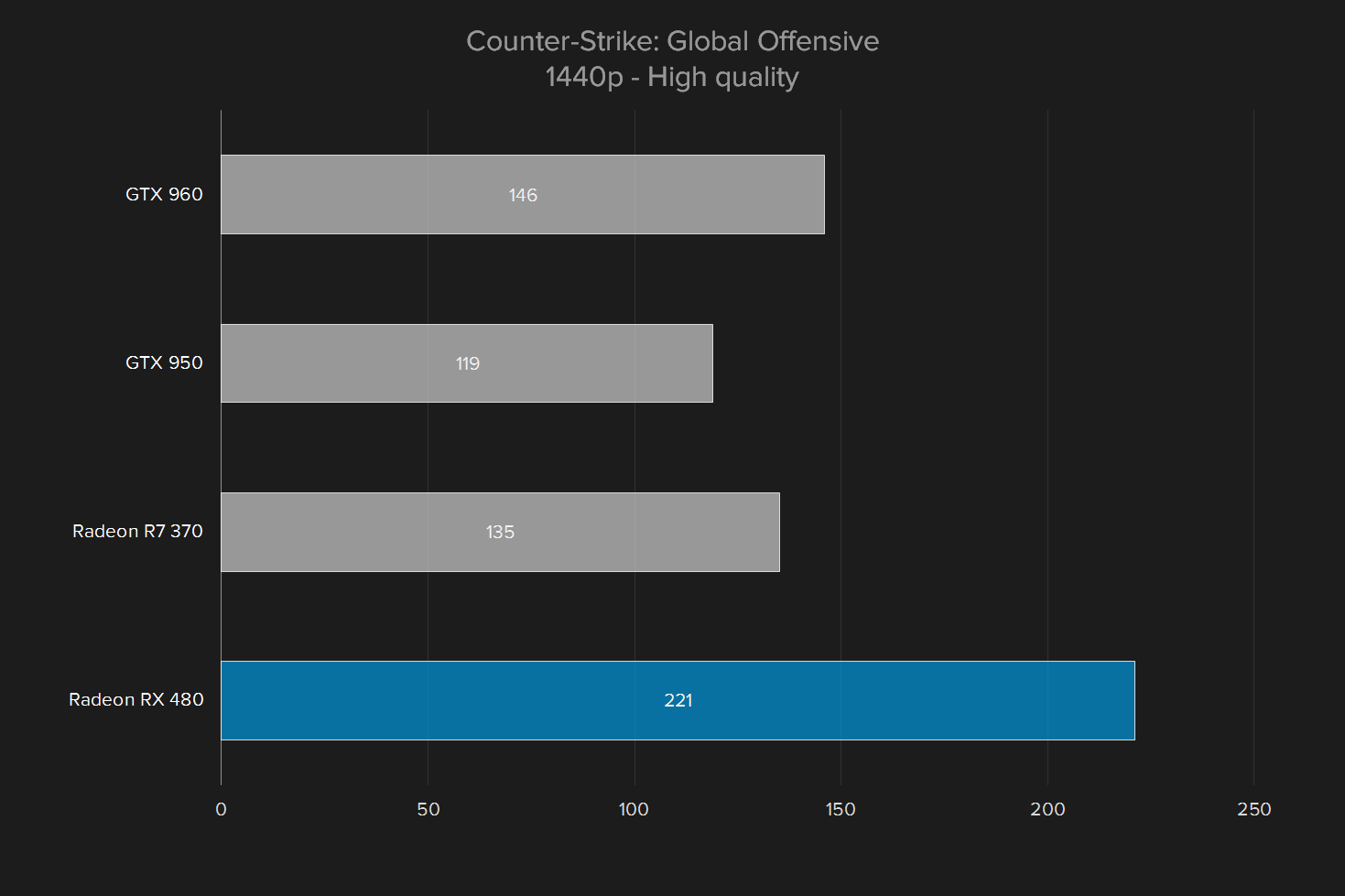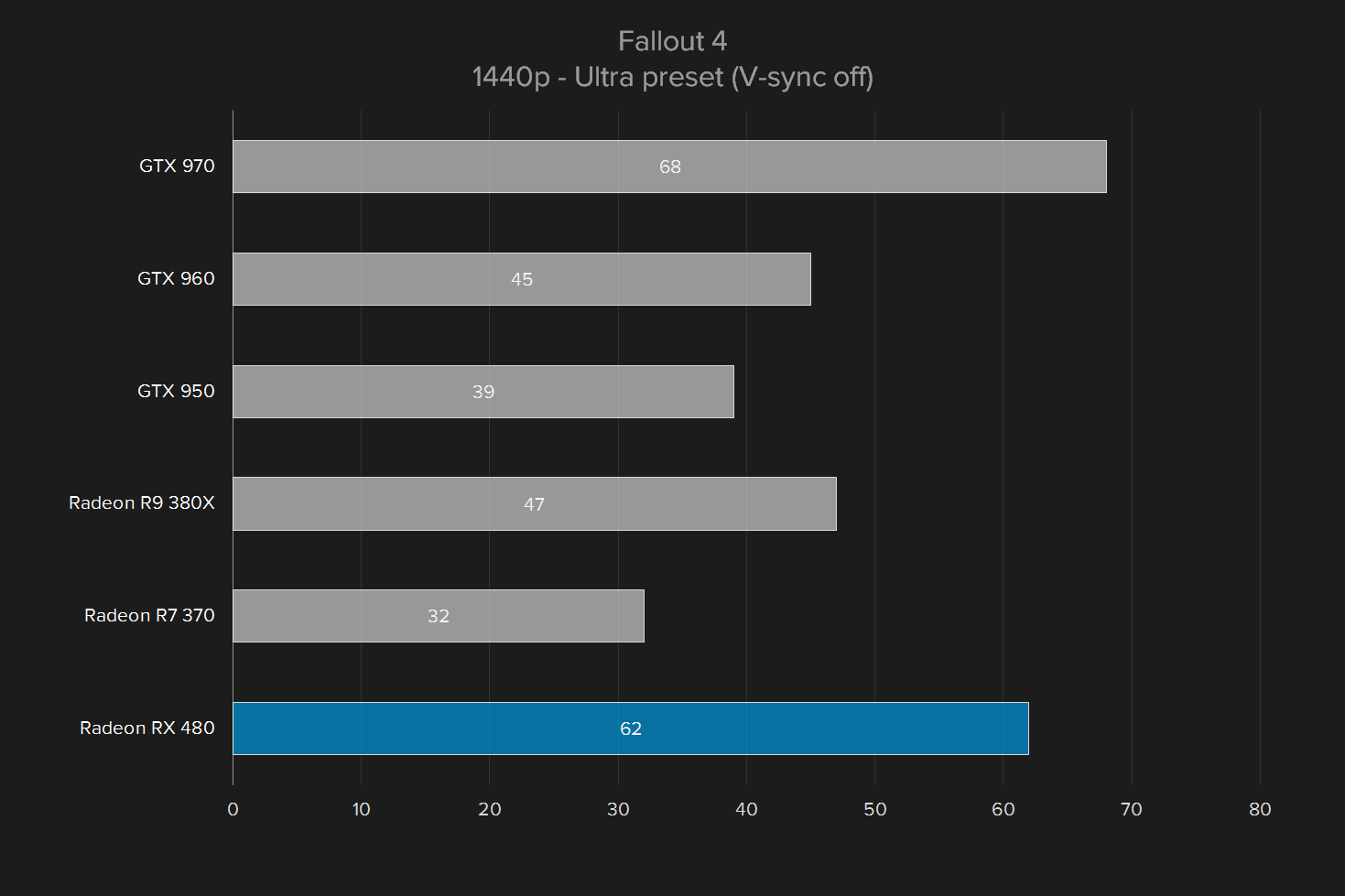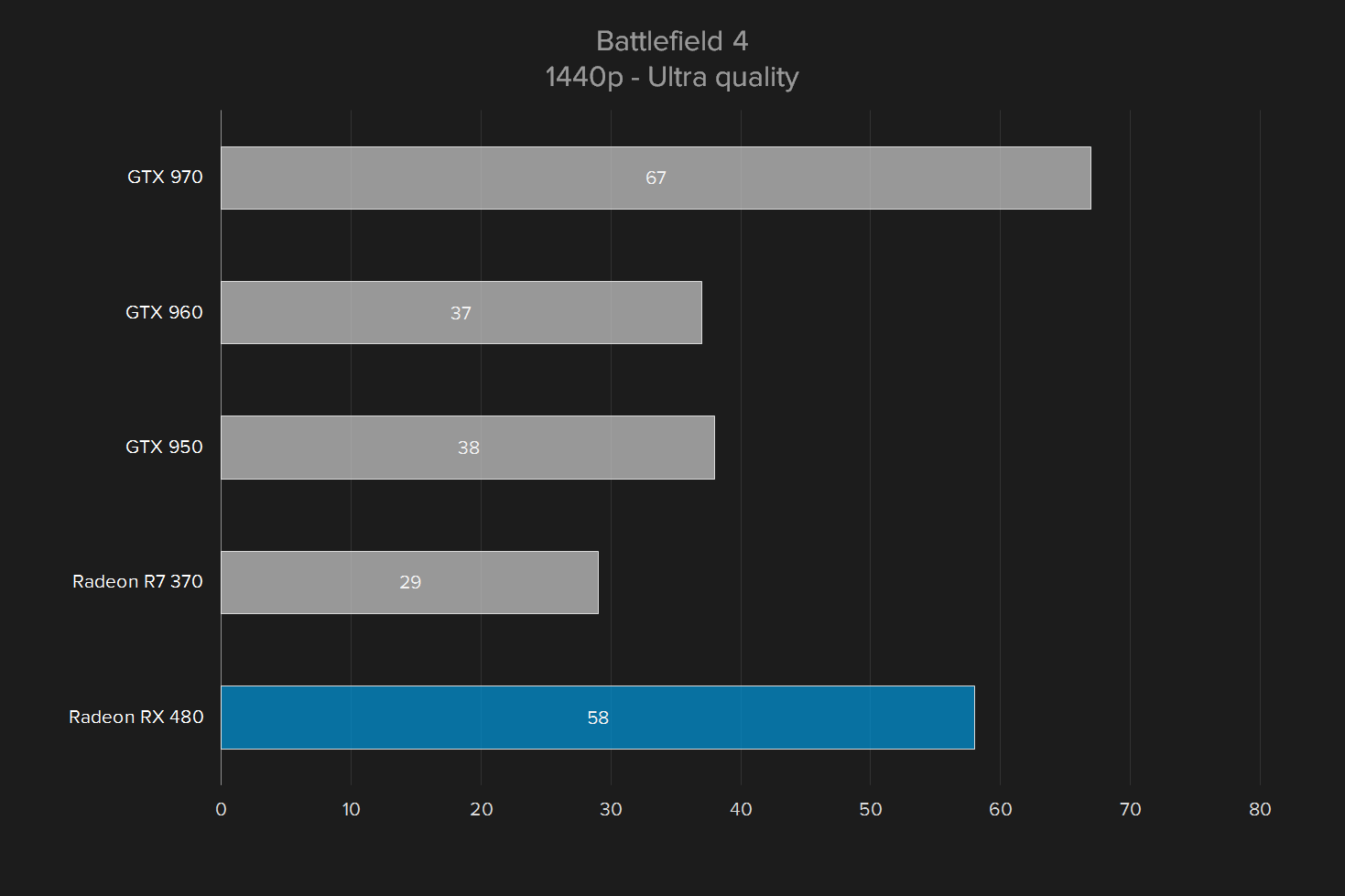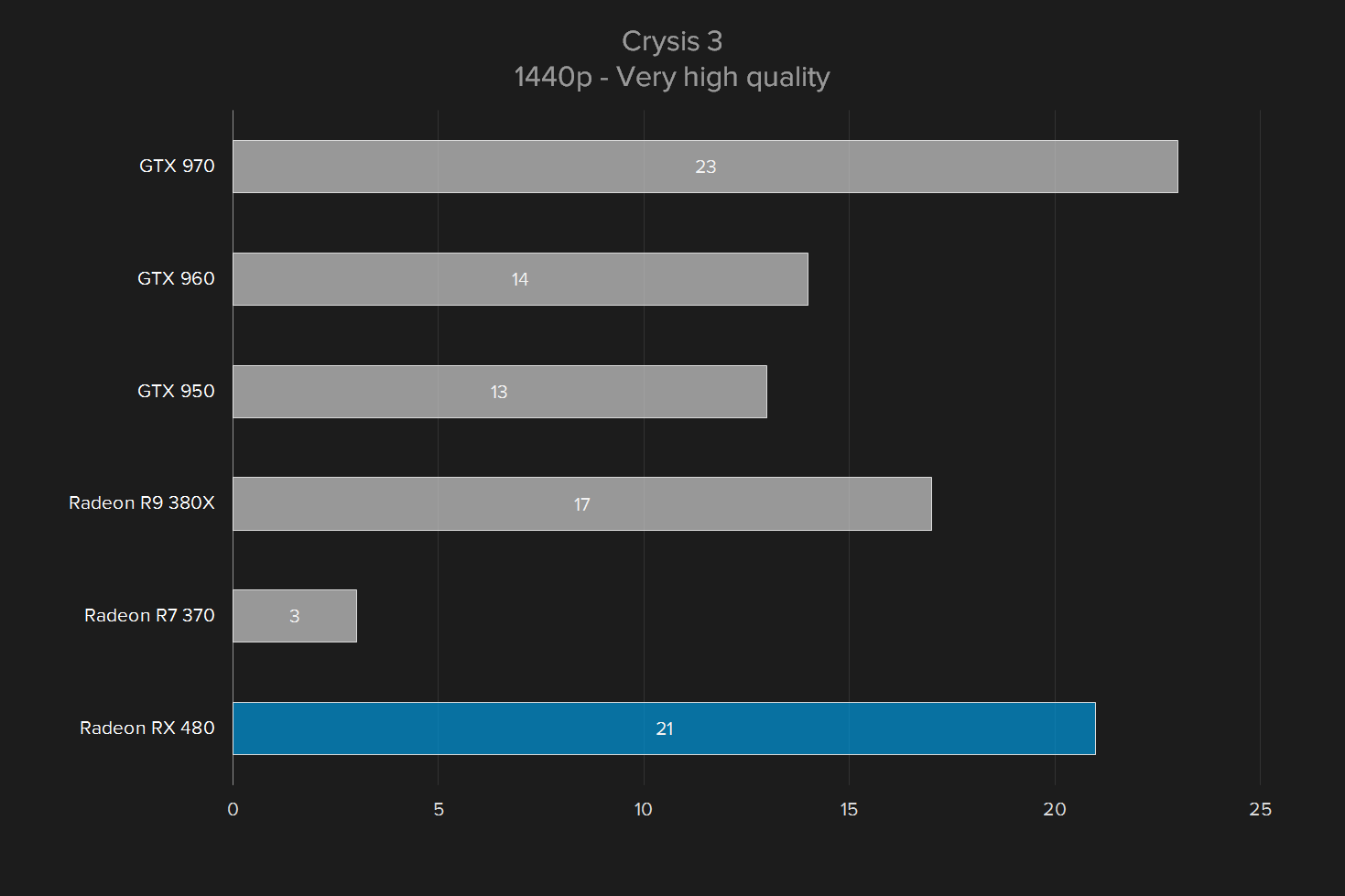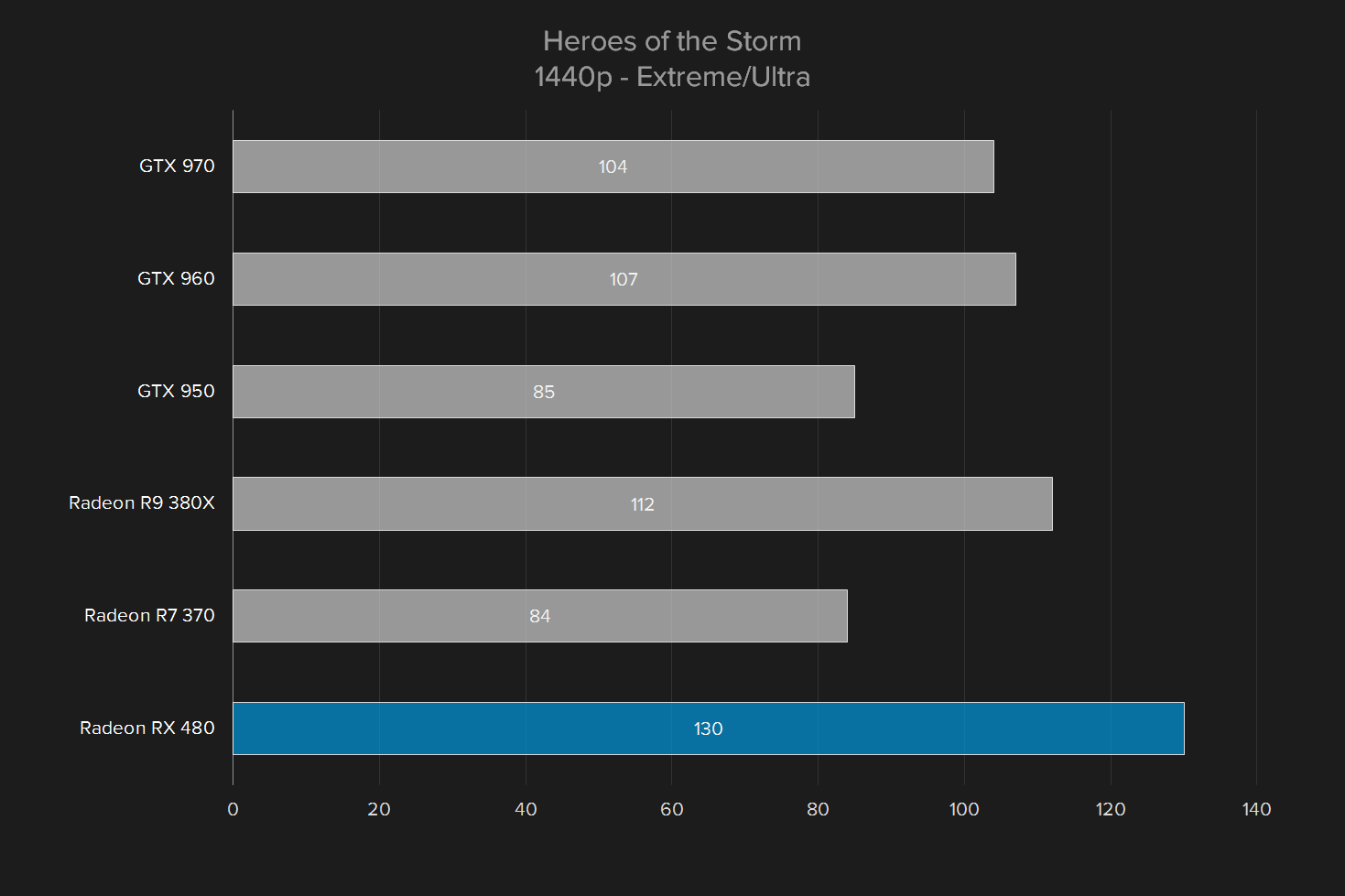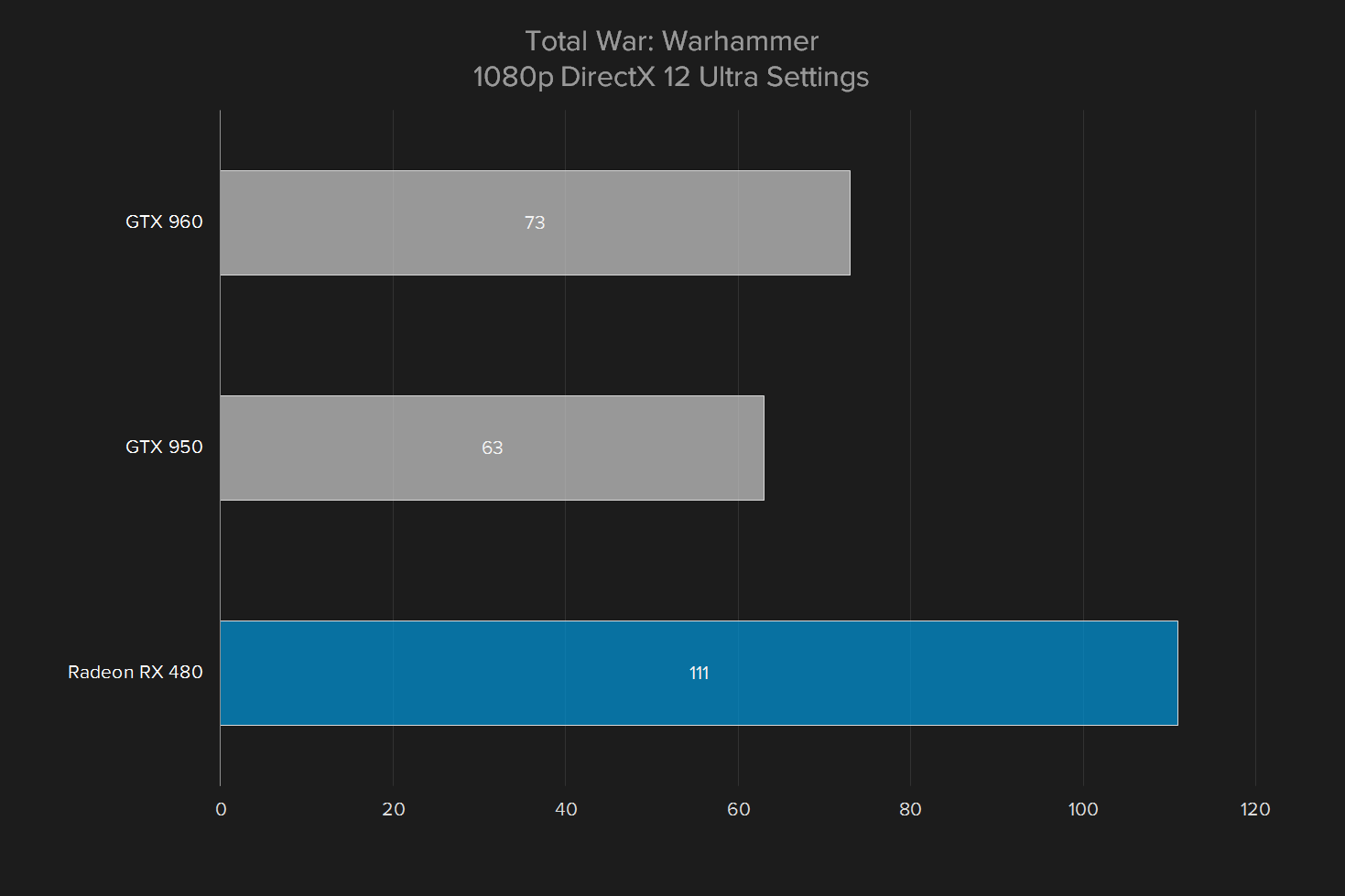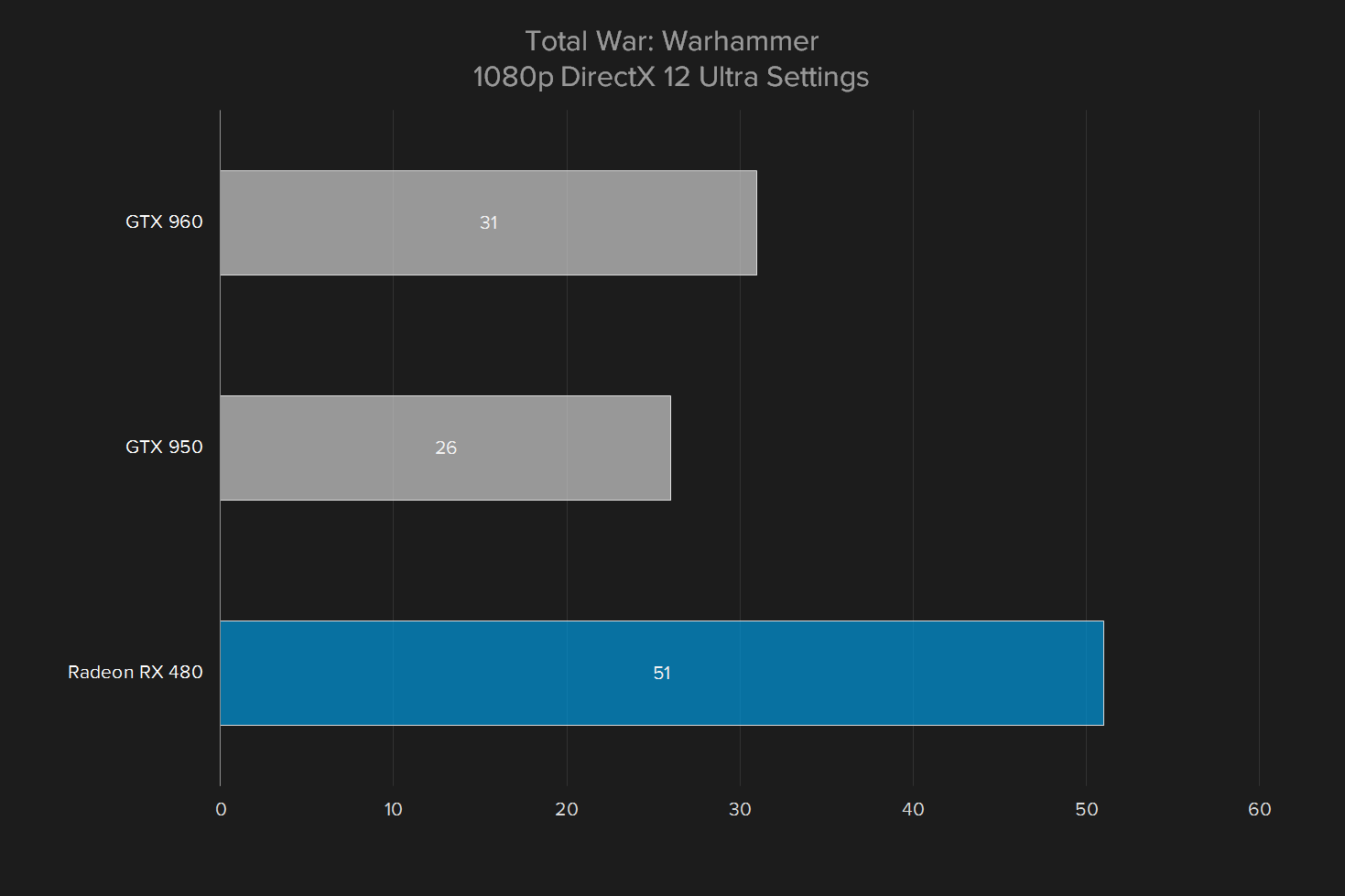- Handsome design
- Excellent performance
- Widens its lead in DirectX 12 benchmarks
- Quiet operation
- Great value
- Build quality show the card’s budget roots
AMD moved boldly into the high-end GPU market last year with its new Radeon R9 Fury X, Fury, and Fury Nano video cards. It was an unusual move for the red team, which has focused more on value in recent years – and it didn’t really work out. The Fury line couldn’t catch up to Nvidia’s best.
This year, AMD is returning to its roots with the value-minded RX 480. Unlike recent mid-range cards from AMD, the RX 480 wasn’t born by shuffling a high-end GPU down to an affordable price point. The RX 480 is the debut card for the company’s new Polaris architecture, the first ever built on a 14nm FinFET production process.
Nvidia has fired up the high-end market over the last half-decade with increasingly magnificent – and increasingly expensive –entries. With Fury, AMD almost lost itself in the allure of world beating hardware. But it’s instead pivoted back, releasing the RX 480 with 4GB for just $200, or 8GB for $240 (we reviewed the 8GB model).
Positioning the RX 480 as the affordable choice gives AMD a much broader market, and the company’s marketing has a predictable “everyman’s video card” tone. But this is a highly competitive price point, with loads of prior entries from both AMD and Nvidia. This price range currently is dominated by the GTX 960 with 4GB of RAM, and AMD’s Radeon R9 380X – among other cards. Can the RX 480 blow away these mainstays to become the new king of affordable graphics?
Big things in a small package
The RX 480’s GPU is the first built on AMD’s new Polaris architecture. Its codename – Polaris – has featured predominately in marketing, arguably far more so than Nvidia’s new Pascal has featured in its own. But Polaris, like most “new” chip architectures, is not an all-new design. It remains part of the Graphics Core Next family, which AMD first produced back in 2011.
Polaris’ claim to fame is how it’s produced. AMD has used cutting-edge 14-nanometer FinFET production from GlobalFoundries. This provides a small technical advantage over Nvidia, which instead selected 16nm FinFET production for its new Pascal GPU, found in the GTX 1080 and GTX 1070.
A production process change is always a big deal. The commonly quoted metric – 28nm, 20nm, 14nm, and so on – refers to the size of layers used to produce a semiconductor. Reducing the size of layers reduces the size of transistors on the chip, too, which means more can be packed in. Smaller transistors also use less power.
The RX 480 blatantly copies AMD’s handsome R9 Fury series, the most attractive line of video cards ever made
In this case, that’s even more important than usual. Production constraints and delays at AMD’s major chip suppliers forced it to use an aging 28nm process much longer than preferable (Nvidia faced the same problem). The reduction in production size means AMD can claim some awesome gains, most notably in the performance-per-watt metric, where the RX 480 is supposedly almost twice as efficient as the Radeon R9 290. AMD also claims respectable “per compute unit” increases of up to 15 percent.
In brief, Polaris should be faster, and much more efficient, than previous Radeon video cards. That would be expected from any new GPU, of course. But in this case, due to the long wait on upgrading from 28nm production, the boost should be far beyond the norm.
Trickle-down economics
Now that we’ve talked about Polaris, let’s talk about the RX 480 itself.
The reference card blatantly copies AMD’s handsome R9 Fury series, arguably the most attractive line of video cards ever made. With the RX 480, though, much of the look is a façade. Components that were metal on the R9 Fury X are instead plastic on the RX 480. Minor details, like the R9 Fury X’s full metal PCB cover, are missing from the RX 480. Ultimately, the downgrades result in a card that lacks the heft and precision of AMD’s most expensive products – but at least it looks the part.
A single six-pin PCI connector powers the RX 480. The PCB the graphics processor rests on is not large, but the cooling shroud extends beyond it, increasing the length of the card to about eight and a half inches. It’s also almost four inches wide, and about 1.3 inches tall. These dimensions are almost identical to the Nvidia GTX 960, though the 960 is about a half-inch longer. The RX 480 is much smaller than the Asus-branded Radeon R9 380X we have in our office, which is over an inch longer and almost an inch wider. Overall, the new Radeon’s footprint is about the same as other mid-range video cards we’ve tested over the past few years.
The RX 480’s GPU serves up 36 compute units, with 2,304 stream processors. They run at a base clock of 1,120MHz with a maximum Boost clock of 1,266MHz. This translates to a quoted performance of 5.8 teraflops – over three times more powerful than a PlayStation 4. While 4GB of GDDR5 memory is standard, the 8GB option, which we reviewed, is $40 more. Memory bandwidth is quoted at 224 gigabytes per second over a 256-bit memory interface. Power consumption is quoted at a maximum of 150 watts.
These numbers are always hard to parse, and doubly so in this case. The RX 480 has a new architecture, so it’s not possible to compare its number of Compute Units or clock speed to other Radeons and guess at performance. Still, the numbers indicate it’s a powerful card, and it’s good to see AMD has provided its budget card with both four gigs of memory and a robust 256-bit memory interface.
The card takes a modern approach to video output, with three DisplayPort 1.3 HBR / 1.4 HDR outputs and one HDMI 2.0.
Plenty of competition
AMD announced the Radeon RX 480’s $200 starting price at its Computex 2016 press conference. The crowd immediately burst into cheers, and for good reason.
After a few glorious years of affordability, marked by cards like the GeForce 8800 GT and AMD Radeon HD3870, the mid-range has fallen into a slump. The current options aren’t the obvious value leaders they used to be. They’ve also struggled to keep up with monitor affordability. 1080p remains the most common resolution by far, but 1440p monitors are now just a few hundred dollars, and they’re a great upgrade. We think a lot of gamers would like to make the leap to 1440p, but bumping up the resolution means spending $300 to $400 on a new video card to power the extra pixels, which uncomfortably raises the overall price.
AMD seems to think the Radeon RX 480 will be the first $200 card to reliably push into 1440p territory. Normally, a card at this price point would come bundled with graphs demonstrating 1080p performance. Instead, the RX 480’s press kit came with a graph of 1440p performance. Not every game exceeds 60 FPS, according to AMD, but most do, and the company is pitching that as a key trait.
AMD’s new card soundly thrashes Nvidia’s GTX 960.
Another key is virtual reality, which was a focus of the Computex debut. Many gamers want to experience VR, according to AMD – but can’t afford to do it. The Oculus Rift recommends at least a GTX 970, which is typically over $300. The Vive’s requirements aren’t as rigid, but the most demanding titles require a card of similar caliber. AMD says the RX 480 will meet the requirements of the Rift and Vive, a statement that implies the company thinks it’ll be able to compete with Nvidia’s GTX 970.
That’s a high bar to clear, and there’s already tough competition in the RX 480’s price bracket. Nvidia’s GTX 960 is its most obvious competitor. The card comes in versions with 2GB and 4GB of memory, with a variety of available clock speeds. It’s an older card, so we’ll be looking for the new Radeon to defeat it by a strong margin. There are also several AMD cards in this price range. The most relevant is probably the Radeon R9 380X. It’s typically sold for just a bit more than $200 with 4GB of RAM.
The new $200 champion
Can the new RX 480 soundly defeat the GTX 960, and give Radeon owners a reason to upgrade?
To find out we fired up our new test rig. It has an Intel Core i7-6950X processor, 8GB of DDR4 memory, and an Intel 750 Series solid state hard drive. Clearly, these components won’t bottleneck the card.
We rounded up a broad selection of alternatives to test against the RX 480 8GB. On Nvidia’s side we selected the GTX 950, GTX 960 2GB, and GTX 970. On AMD’s side, we picked the R7 370 and R9 380X. The GTX 970 was not available to test in every benchmark, and our R9 380X encountered technical issues, so it also will not appear in every benchmark.
Let’s start with the current target resolution for the RX 480’s competitors – 1080p.
We like it when hardware makes commentary easy, and that’s certainly the case here. AMD’s new video card beats its main competitor, the GTX 960, in each of the five games we tested. It’s not even close. The margin of victory is approximately 50 percent in Counter-Strike: Global Offensive, Fallout 4, and Battlefield 4. In Crysis 3 the lead is extended to over double the GTX 960’s performance – perhaps because the 2GB version of that card starts to run out of frame buffer. Heroes of the Storm, the most erratic and oddly processor-bound game in our test suite, is the only title where the GTX 960 comes close.
So, the RX 480 soundly whoops the GTX 960. And it does so by a large enough margin to suggest Nvidia’s inevitable GTX 1060 could swoop in and retake the lead with ease. That’s not to say the GTX 1060 won’t be competitive, or quicker. We have no way of knowing. But the RX 480’s strong results make it clear the battle for best $200 video card is about to heat up.
But 1080p isn’t really the RX 480’s claimed target market. This card is supposed to power 1440p monitors and virtual reality headsets like the Rift, which has a 2,160 x 1,200 display. Can the RX 480 really handle that?
Yes, it can. AMD clearly spent time tuning the RX 480’s capabilities for 1440p. The standout games are Fallout 4, where the new Radeon hits an average of 62 FPS, and Battlefield 4, where it manages 58 FPS (at maximum detail in both cases). These results are in range of the ideal average of 60 FPS, and a major step up from previous budget video cards, which could average around 45 FPS at best.
Of course, Crysis 3 still isn’t playable at 1440p and maximum detail. It remains exceptionally demanding when the settings are cranked up to their maximum. We also tested the game at medium detail, however, with MSAA 2X enabled. The RX 480 averaged 52 FPS, far head of the GTX 960’s average of 34 FPS.
In fact, the RX 480 comes very close to the Nvidia GTX 970, which until recently was considered the mandatory minimum for serious gaming at 1440p resolution. The new Radeon is only 10 to 15 percent slower. Impressive, given that the GTX 970 (at $300) is 50 percent more expensive.
DirectX 12 pushes the RX 480’s lead
AMD’s RX 480 is the new mid-range champion – but wait, there’s more! DirectX 12 performance has become an important talking point for AMD. Its past cards have bested Nvidia in games that use DX12’s asynchronous compute features. That point was driven home at Computex, where AMD claimed that a crossfire RX 480 setup can easily defeat an Nvidia GTX 1080 in Ashes of the Singularity, a DX12-enabled strategy title – despite the fact a GTX 1080 is much more expensive than two RX 480s.
We weren’t given a pair of cards to test, but we were able to throw the RX 480 into Total War: Warhammer’s DX12 benchmark. It’s a newer test and also, we think, more relevant. Ashes of the Singularity is not a popular title. Total War: Warhammer is currently among the top 20 most-played games on Steam.
Due to the restraints on certain cards tested, we were only able to put together the GTX 950 and 960 for this test. Once again, this game gives a major victory to the Radeon RX 480. At 1440p, with DirectX 12 on and Ultra detail selected, the RX 480 defeats the GTX 960 by a margin of 65 percent. That’s massive.
We’re not sure how that shakes out in the real world, however. Yes, the RX 480 does extremely well in Total War: Warhammer. But asynchronous compute’s benefits have harnessed almost exclusively by strategy titles so far. That dulls the edge of the RX 480’s advantage. Over time, more and more titles will adopt the feature, but there’s no way to know exactly when that’ll happen. It may, or may not, occur before Nvidia can catch up.
Still, a win is a win, and DX12 pushes the RX 480’s already substantial lead over the GTX 960.
The software’s not bad, either
AMD executed a much-needed revamp of its driver software interface in 2015. Called Crimson Edition, it included a new interface – AMD Radeon Settings. Previously, AMD owners had to deal with an aging driver menu, along with separate GUI interfaces that were sometimes used to access value-added features. AMD Radeon Settings consolidated all of this into a single, central location. The interface itself is compact, so it’s easy to use on a variety of monitors and never take up unnecessary screen real estate.
With the RX 480, gamers on a modest budget can finally afford to play on a 1440p monitor.
Over the past year we’ve been swayed to feel that it’s even better than Nvidia’s GeForce Experience. The green team still suffers a distracting split between its driver menus and GUI front-end, and its interface is a bit more confusing to navigate due to its reliance on long lists of small text.
AMD Radeon Settings has not fundamentally changed with the RX 480’s introduction, but it does have a new feature called Wattman. It’s a powerful built-in utility that give users a peek into the inner workings of the card. It relays data about activity level, GPU clock speed, memory clock speed, temperature, and fan speed. All this information is presented numerically, and in the form of several graphs.
Wattman does more than provide facts and figures. It also can be used to control GPU clock, memory clock, fan speed, and voltage. Better still, it does not operate as a simple on-off switch. Users can select settings for a variety of usage states. Overclocking is a cinch, as is manipulating the fan to improve cooling or reduce noise.
Nvidia cards – and previous AMD cards — also had built-in overclocking tools, but they were basic. Most third-party manufacturers provided their own custom utilities to help power users unlock extra grunt. Wattman may reduce that practice in future AMD video cards, as it handles most of what users want from an overclocking utility.
Of course, the RX 480 also supports all the software features available in previous Radeon cards including FreeSync, EyeFinity, and the AMD’s now obsolete Mantle API.
Refreshingly quiet
Recent cards from AMD have suffered noise issues due to high power draw, which generated excess heat. The new 14nm production process has thankfully solved that problem. The RX 480 did not increase our test system’s overall sound profile even at load, an achievement that few cards at any price point can claim. We also noted a remarkable lack of coil whine, an annoying high-pitched squeal that has nothing to do with the fan. Whine only became audible in one scene from the 3D Mark Fire Strike benchmark. We noticed no coil whine at all in real-world gaming.
Power draw problems
As RX 480 reviews surfaced, it became clear that the card had a power draw problem. Specifically, it sometimes draws more than the 150 watts stated by AMD. As a result of that, it exceeded PCIe standards for power draw across a motherboard’s PCIe connector.
While no one reported damage as a result of this, it was a worrying issue. The the long-term impact of excessive power draw over the connector is an unknown. It could be a non-issue. Or it could eventually do damage that would put your PC out of action.
Fortunately, AMD quickly released a driver update to resolve the issue. The card does still draw more power in certain situations that originally stated by AMD, but the excess is drawn over the power supply’s PCIe 6-pin connector, not the motherboard. Power supplies, being power supplies, are far better equipped to handle a slight deviation from specified power draw. And the driver update has no impact on performance.
Conclusion
AMD’s Radeon RX 480 is awesome. This new card is more than just the new champion of mid-range PC gaming. It proves that affordable cards can be exciting, even ground-breaking. It soundly thrashes the GTX 960, as well as AMD’s Radeon R9 380X, the previous title holders in this segment. In doing so, it pushes mid-range gaming beyond 1080p resolution. Gamers on a modest budget can, for the first time, afford to play on a 1440p monitor – or a VR headset.
And performance is just the beginning of the story. The RX 480 is a handsome card with strong driver software. It’s not too heavy, or large, or power hungry. The reference design is attractive, and third party manufacturers are sure to improve on it with unique cooling solutions and software extras.
At Computex, AMD portrayed the RX 480 as an enthusiast card that everyone can afford. It’s exactly that. It handles all modern titles at maximum or near-maximum detail, and does so for just $200.
While we tested the 8GB version, which is $240, we don’t believe most gamers will need to spring for it. The 4GB model has plenty of bandwidth for modern titles, and then some. The 8GB model is, to be honest, a marketing move that targets gamers who just can’t keep their money in their wallets.
The Radeon RX 480 is a wonderfully balanced video card that proves AMD still has fight left in it.
Update 7/8/2016: We updated this review to make clear we tested the 8GB card, and also addressed the power draw controversy surrounding the RX 480.








